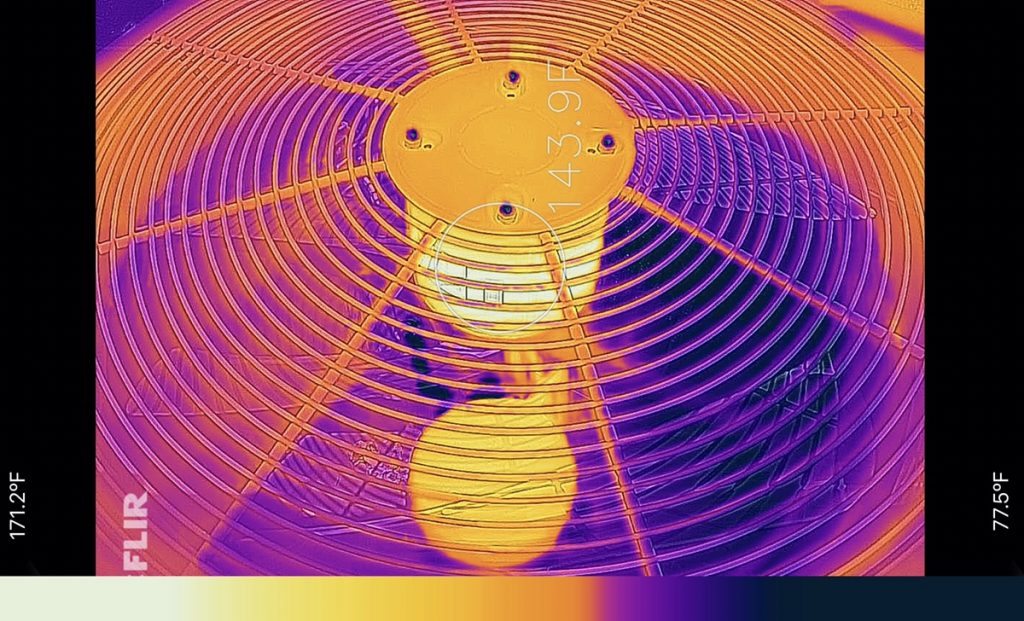Get Tech Tips
Subscribe to free tech tips.
Motor Overheating

An important rating on motors is the AMBIENT temperature rating that the motor can operate at. This rating refers to the temperature of the air around the motor, not the temperature of the motor itself or even the temperature of the outdoor air—since the motor is often in a condenser air stream that is higher temp than outdoors. In HVAC/R, we will commonly see condensing fan motors at 60°C (140°F), 70°C (158°F), and 80°C (176°F), and blower motors will often be rated at 40°C (104°F).
In residential and light commercial HVAC, it is fairly common for condensing fan motors that are experiencing issues with overheating and going out on internal thermal overload during the heat of the day, which then drives up the head pressure until the compressor goes off on thermal or on a high-pressure fault. In some cases, the system will cool off overnight and run again once the tech arrives, or if the customer shuts it off and it cools off, the issue may not show up again right away, causing a nuisance intermittent callback.
The temperature of the motor shell itself will vary from motor to motor. Still, it will commonly be 30°-60° warmer than the outdoor temperature during normal operation, depending on factors such as if the sun is shining on the top, the efficiency of the motor, and how long they have been running.
In many cases, you may be able to compare a motor you suspect to be overheating against other units nearby with the same motor operating in nearly the same conditions. Look at the photo below compared to the one above. Both of these are similar units, and the photos were taken a few minutes apart. Despite that, you can see that one motor is running quite a bit warmer than the other. Sure enough, the hotter motor is noisier and has more side-to-side play in the bearings.

If you have reason to believe a motor is running hotter than it should, there are a few things that can cause the issue to watch out for:
- High condensing temperature – If the air around the motor is hotter, the motor will also be hotter. Watch for dirty condensers and overcharge.
- Direct sun – Pretty obvious, but if the radiant heat from the sun is right on the motor, it will run hotter.
- Voltage – Check and make sure the motor voltage is in the proper range while running (under load).
- Capacitor – Make sure the capacitor is the correct size for the motor, both weak and oversize capacitors can cause overheating.
- Bearing issues – When bearings start to fail, there may be increased noise or side-to-side shaft play (but not always).
A thermal camera can produce a great look at the temperature of the motor, but keep in mind that there will be some inaccuracy of the temperature reading due to varying emissivity depending on the motor surface, so it's best to use it to compare motors rather than trusting a single reading as a pass/fail test.
—Bryan
P.S. – These images were taken with a FLIR One Pro that I got from TruTech Tools.
Check out our handy calculators HERE.











Comments
1.What causes low discharge superheat?
1.What causes low discharge superheat?
liquid coming back to the compressor
liquid coming back to the compressor
To leave a comment, you need to log in.
Log In